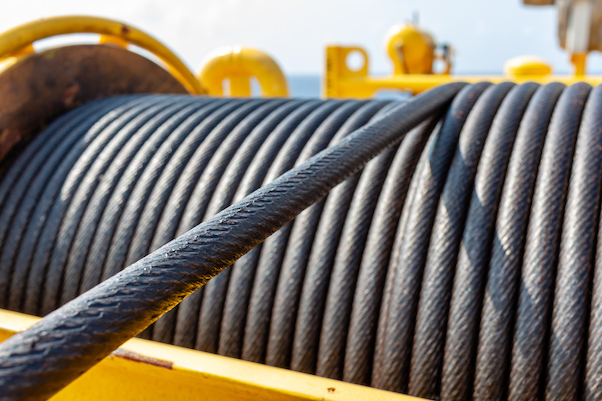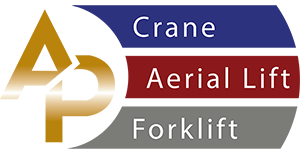Services
Aerial Lift TrainingForklift Operator Certification
Instructor Courses
Mobile Crane Operator Certification
Online Training
Crane Operator Training
Overhead Crane Training
Rigging and SignalPerson Training
All Purpose Crane Training offers crane operator training on-site or off-site. Providing National accredited crane operator certification meeting OSHA ANSI standards for crane operators to become certified.
1926.1401
1926.1402
1926.1403
1926.1404
1926.1405
1926.1406
1926.1407
1926.1408
1926.1409
1926.1410
1926.1411
1926.1412
1926.1413
1926.1414
1926.1415
1926.1416
1926.1417
1926.1418
1926.1419
1926.1420
1926.1421
1926.1422
1926.1423
1926.1424
1926.1425
1926.1426
1926.1427
1926.1428
1926.1429
1926.1430
1926.1431
1926.1432
1926.1433
1926.1434
1926.1435
1926.1436
1926.1437
1926.1438
1926.1439
1926.1440
1926.1441
1926.1442

- (a) Original equipment wire rope and replacement wire rope must be selected and installed in accordance with the requirements of this section. Selection of replacement wire rope must be in accordance with the recommendations of the wire rope manufacturer, the equipment manufacturer, or a qualified person.
- (b) Wire rope design criteria: Wire rope (other than rotation resistant rope) must comply with either Option (1) or Option (2) of this section, as follows:
- (1) Option (1). Wire rope must comply with section 5-1.7.1 of ASME B30.5- 2004 (incorporated by reference, see 1926.6) except that sections paragraph (c) must not apply.
- (2) Option (2). Wire rope must be designed to have, in relation to the equipments rated capacity, a sufficient minimum breaking force and design factor so that compliance with the applicable inspection provisions in 1926.1414 will be an effective means of preventing sudden rope failure.
- (c) Wire rope must be compatible with the safe functioning of the equipment.
- (d) Boom hoist reeving.
- (1) Fiber core ropes must not be used for boom hoist reeving, except for derricks.
- (2) Rotation resistant ropes must be used for boom hoist reeving only where the requirements of paragraph (e)(4)(ii) of this section are met.
- (e) Rotation resistant ropes.
- (1) Definitions.
- (i) Type I rotation resistant wire rope ("Type I"). Type I rotation resistant rope is stranded rope constructed to have little or no tendency to rotate or, if guided, transmits little or no torque. It has at least 15 outer strands and comprises an assembly of at least three layers of strands laid helically over a center in two operations. The direction of lay of the outer strands is opposite to that of the underlying layer.
- (ii) Type II rotation resistant wire rope ("Type II). Type II rotation resistant rope is stranded rope constructed to have significant resistance to rotation. It has at least 10 outer strands and comprises an assembly of two or more layers of strands laid helically over a center in two or three operations. The direction of lay of the outer strands is opposite to that of the underlying layer.
- (iii) Type III rotation resistant wire rope ("Type III"). Type III rotation resistant rope is stranded rope constructed to have limited resistance to rotation. it has no more than nine outer strands, and comprises an assembly of two layers of strands laid helically over a center in two operations. The direction of lay of the outer strands is opposite to that of the underlying layer.
- (2) Requirements.
- (i) Types ll and lll with an operating design factor of less than 5 must not be used for duty cycle or repetitive lifts.
- (ii) Rotation resistant ropes (including Types l, ll and III) must have an operating design factor of no less than 3.5.
- (iii) Type I must have an operating design factor of no less than 5, except where the wire rope manufacturer and the equipment manufacturer approves the design factor, in writing.
- (iv) Types ll and lll must have an operating design factor of no less than 5, except where the requirements of paragraph (e)(3) of this section are met.
- (3) When Types ll and lll with an operating design factor of less than 5 are used (for non-duty cycle, non-repetitive lifts), the following requirements must be met for each lifting operation:
- (i) A qualified person must inspect the rope in accordance with 1926.1413(a). The rope must be used only if the qualified person determines that there are no deficiencies constituting a hazard. In making this determination, more than one broken wire in any one rope lay must be considered a hazard.
- (ii) Operations must be conducted in such a manner and at such speeds as to minimize dynamic effects.
- (iii) Each lift made under 1926.1414(e)(3) must be recorded in the monthly and annual inspection documents. Such prior uses must be considered by the qualified person in determining whether to use the rope again.
- (4) Additional requirements for rotation resistant ropes for boom hoist reeving.
- (i) Rotation resistant ropes must not be used for boom hoist reeving, except where the requirements of paragraph (e)(4)(ii) of this section are met.
- (ii) Rotation resistant ropes may be used as boom hoist reeving when load hoists are used as boom hoists for attachments such as luffing attachments or boom and mast attachment systems. Under these conditions, all of the following requirements must be met:
- (A) The drum must provide a first layer rope pitch diameter of not (less than 18 times the normal diameter of the rope use.
- (B) The requirements in 1926.1426(a) (irrespective of the date of manufacture of the equipment), and 1926.1426(b).
- (C) The requirements in ASME B30.5-2004 sections 5-1.3.2(a), (a)(2) through (a)(4), (b) and (d) (incorporated by reference, see 1926.6) except that the minimum pitch diameter for sheaves used in multiple rope reeving is 18 times the nominal diameter of the rope used (instead of the value of 16 specified in section 5- 1.3.2(d)).
- (D) All sheaves used in the boom hoist reeving system must have a rope pitch diameter of not less than 18 times the nominal diameter of the rope used.
- (E) The operating design factor for the boom hoist reeving system must be not less than five.
- (F) The operating design factor for these ropes must be the total minimum breaking force of all parts of rope in the system divided by the load imposed on the rope system when supporting the static weights of the structure and the load within the equipment's rated capacity.
- (G) When provided, a power-controlled lowering system must be capable of handling rated capacities and speeds as specified by the manufacturer.
- (f) Wire rope clips used in conjunction with wedge sockets must be attached to the unloaded dead end of the rope only, except that the use of devices specifically designed for dead-ending rope in a wedge socket is permitted.
- (g) Socketing must be done in the manner specified by the manufacturer of the wire rope or fitting.
- (h) Prior to cutting a wire rope , seizings must be placed on each side of the point to be cut. The length and number of seizings must be in accordance with the wire rope manufacturers instructions.
